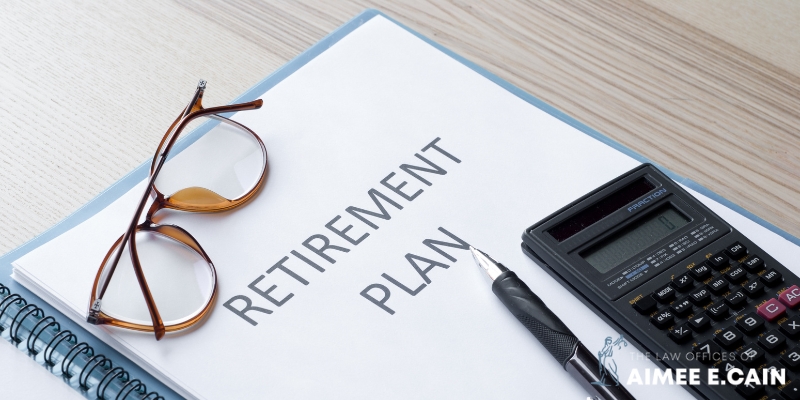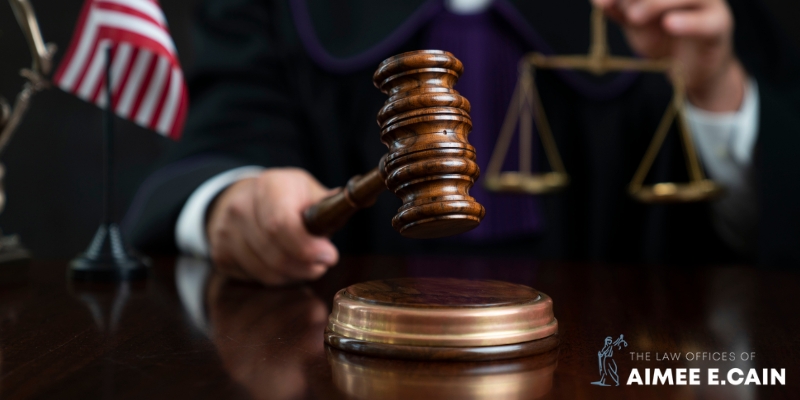Concord Retirement Plan and Pension Attorney

The Law Offices of Aimee E. Cain Concord, NC Retirement Plan and Pension Lawyer
Financial stability following retirement is a worry most people share. After all, people spend many years of their life working to save for their future so that in later years they are more comfortably able to travel, spend time freely with family, or simply invest for their family’s future. Your retirement plan and pension savings have a significant impact on these goals. Knowing how the legal system could impact as well as protect your future earnings will help you be better prepared for its arrival.

If you have questions about your retirement or are a business owner who needs help setting up a retirement system that meets the legal requirements, seek the help of the trusted experts at The Law Offices of Aimee E. Cain.
Pension and Retirement Benefits
The benefits you receive when you retire are based on agreements you make with your employer or with the state based on contributions, age of retirement, and years of service. When you begin employment with a company that offers retirement benefits, or if you are a state public employee or local government employee, then you will enter into a retirement or pension plan agreement that outlines the responsibilities of both parties in the savings process. Your benefits will outline how long you will receive payments, what is included as well as what occurs in the event that you pass while receiving benefits.
Private Employers in North Carolina
Unlike the public sector, private industries may operate retirement and pension savings programs within their own business as long as they meet the standards of the Employee Retirement Income Security Act (ERISA). This act dictates how private employers need to design their plans to establish fiduciary standards, grievance processes, and many other protections for the employee.
Factors that play a role in private retirement that must be considered also include what happens if the business terminates, files for bankruptcy, or is sold to another company. It is important to fully understand the retirement agreement with your company to be sure you are aware of any pitfalls that may arise during or after your employment.

Pension Plan Division
When a couple is facing a divorce, the pension and retirement accounts associated with each spouse are often forgotten about. While couples are working and married, the contributions to their retirement and pension savings are considered with their income. This can sometimes be the largest sum of savings that a couple shares and therefore is subject to inclusion in a divorce settlement amongst other assets the couple has accrued.
Using a formula to calculate the amount of the pension or retirement that was collected during the marriage, the state will divide the number of years a couple was married by the number of years of employment during that time. This will help to determine the equitable distribution of the savings. While one spouse is rarely awarded more than 50% of the other spouse’s plan, there may be occasions where this occurs.
Military Retirement Benefits
The US Military operates an independent retirement system for all former personnel that qualifies based on years of service and discharge status. Depending on when you joined the military, which program you fall under could alter as the military has both the new Blended Retirement System (BRS) beginning on January 1, 2018, and the legacy High-3 System for those who joined prior to December 31, 2017.
FAQs About Concord, NC Retirement Plan and Pension Law
What Federal Law Governs Pension Plans?
The Employee Retirement Income Security Act (ERISA), established in 1974, provides the standards by which most voluntary retirement plans private industries must abide by. This includes protections for those who are a member of those plans. It also provides regulatory mandates on plan features and funding, minimum participation standards, vesting, and benefit accrual. When there is a breach of fiduciary responsibility, this law gives participants the right to sue.
What Is a Pension Plan Agreement?
A pension plan agreement is a written agreement between an employer and their employee. It establishes the employee’s participation in the pension program and the employer’s obligation to provide the full benefit to which the employee is entitled. The terms of the agreement can vary from employee to employee. Any changes, modifications, or specifications must be added to the plan and agreed on by both parties to become binding.
What Type of Retirement Plan Is TSERS?
The Teacher and State Employee Retirement System (TSERS) is a benefit plan that bases the amount received on years of service, age, and an employee’s final compensation average, which consists of the average of the highest four consecutive years of service. The program is governed by the North Carolina Department of the State Treasurer. The program is designed to help public employees plan for the future.
Is TSERS Considered a Pension?
The Teacher and State Employee Retirement System (TSERS) is considered a pension plan that is administered by the North Carolina Retirement Plans as a part of the Department of the State Treasurer. It is considered one of the nation’s best when considering its Adjusted Net Pension Liability.
Retirement and Pension Attorney in Concord
Understanding how your retirement and pension plans could be impacted along your employment journey could mean the difference between your dream retirement plans and an unforeseen retirement nightmare. Seeking the help of a legal expert along that journey can help you make sense of your retirement. It may not seem common to hire an attorney for help, but knowing your rights as an employee and as an employer can help to be sure your retirement (or that of your employees) is on track and meets all the regulatory standards necessary to protect all parties.
For retirement and pension services, The Law Offices of Aimee E. Cain are here to help. Our experienced and expert team is ready to assist you at any stage of the retirement process, whether you are building your nest egg or are helping others to build theirs through your business. Contact us today, and we’ll help you start making sense of retirement.




